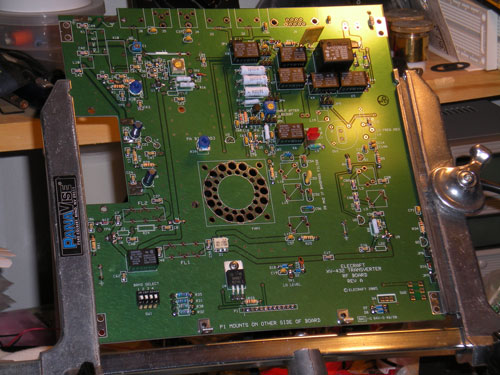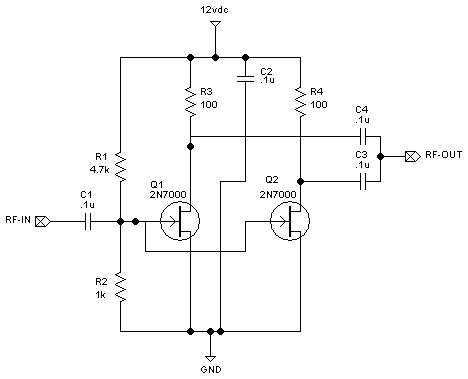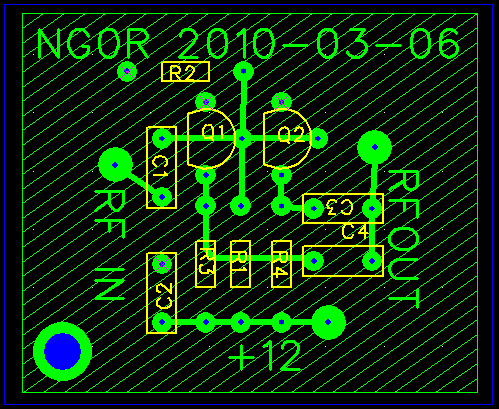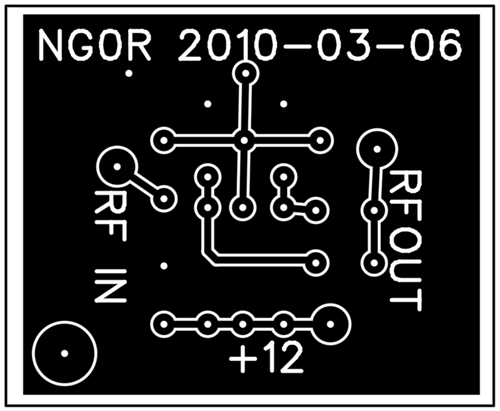Arduino based DDS-60 controller for QRSS
I stumbled across an interesting email from "the Knight's" mailing list from Ross KB1KGA.
The Knights is an email list that is focused on QRSS building and operation. It tends have a lot of participation from Europe and Australia with some momentum building in the US and Canada. The reflector is located at: http://mail.cnts.be/mailman/listinfo/knightsqrss_cnts.be QRSS is a good topic to investigate if you are interested in QRP and especially if you are a "builder."
Here is an excerpt of the email:
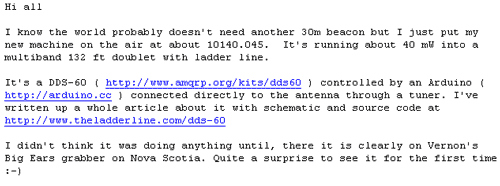
I bet that he has pictures and a schematic at that link....
http://www.theladderline.com/node/10
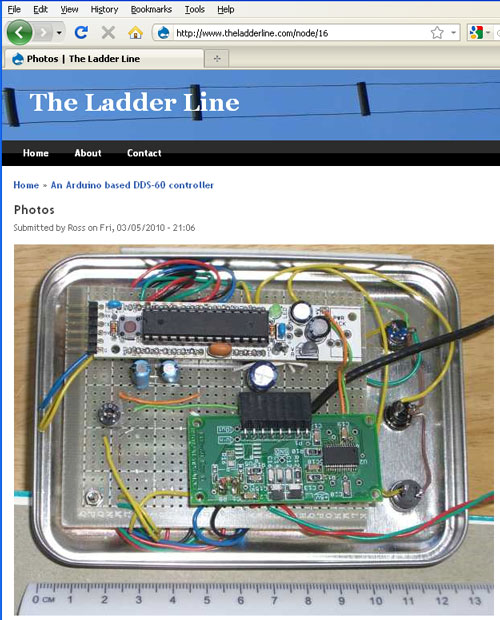
Click around on the links. He includes a schematic and some details on the project.
Notes:
The Arduino community has a lot of traction at the moment. I am really impressed with amount of people talking about the Adunio project board and Atmel in general. I happen to be investigating the Microchip based PIC platform at the moment but the Atmel folks are really making me think that I should revisit my platform choice. Most the folks that I know locally and through work happen to be focused primarily on the PIC so has influenced me since I can lean on them for support. :-)
73 de NG0R

The Knights is an email list that is focused on QRSS building and operation. It tends have a lot of participation from Europe and Australia with some momentum building in the US and Canada. The reflector is located at: http://mail.cnts.be/mailman/listinfo/knightsqrss_cnts.be QRSS is a good topic to investigate if you are interested in QRP and especially if you are a "builder."
Here is an excerpt of the email:

I bet that he has pictures and a schematic at that link....
http://www.theladderline.com/node/10

Click around on the links. He includes a schematic and some details on the project.
Notes:
The Arduino community has a lot of traction at the moment. I am really impressed with amount of people talking about the Adunio project board and Atmel in general. I happen to be investigating the Microchip based PIC platform at the moment but the Atmel folks are really making me think that I should revisit my platform choice. Most the folks that I know locally and through work happen to be focused primarily on the PIC so has influenced me since I can lean on them for support. :-)
73 de NG0R

